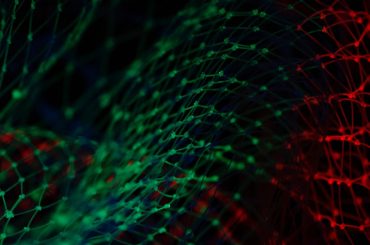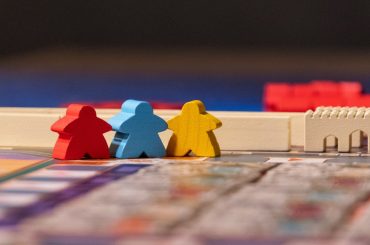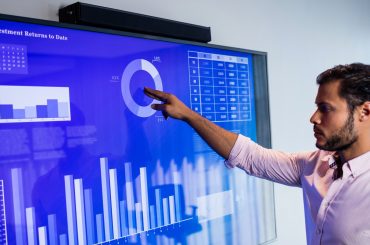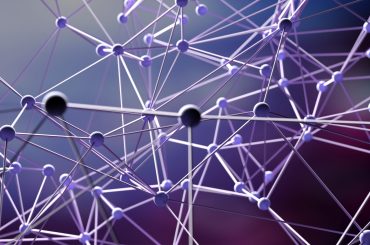It’s like a puzzle: Trying to figure out how independent, dependent and control variables fit together. Researching the intricate relationship between these three concepts can feel overwhelming at first, but once you understand their roles, it all clicks into place. This article will break down the fundamentals of each variable type, providing an easy-to-follow guide for anyone who wants to grasp this mystery quickly.
Have you ever heard someone talk about the importance of controlling variables in research? Or wondered why certain experiments require tracking both independent and dependent variables? It’s no secret that understanding these concepts is key when creating hypotheses or interpreting data – yet many people struggle to make sense of them.
Don’t worry; this article has got your back! We’ll take an in-depth look at what makes each variable unique and explain why they play such a crucial role in scientific exploration. By the end, you’ll have a strong foundation on which to build your knowledge and become more confident in your ability to identify different types of variables.
What Is A Variable?
A variable is any factor, trait, or condition that can exist in differing amounts or types. Variables are an integral part of scientific research as they help us to explain and understand different phenomena. In the context of experiments, there are three main types of variables: independent variables, dependent variables, and control variables (or constant variables).
Independent variables are those factors that scientists manipulate to test a hypothesis; these changes will generate results associated with the experiment’s outcome. Dependent variables measure the effect generated by changing the independent variable; if manipulated correctly, this type of variable will take on predictable values based on what was changed in the independent variable. Control variables remain constant throughout an experiment so that their influence does not affect the data collected from independent and/or dependent variables. By controlling for certain external influences during testing, researchers can isolate desired effects from outside sources.
Although each type of variable serves its own purpose in research design, understanding how all three work together is essential for obtaining reliable results. It allows researchers to effectively investigate cause-and-effect relationships between two different elements without worrying about other potential influencing factors.
Types Of Variables
Variables are the building blocks of research. They can be thought of as pieces in a complex puzzle, each having its own unique purpose and place. Let’s explore the three main types of variables: independent variable, dependent variable, and control variable.
Independent Variable is an input that affects the outcome. It’s also known as an explanatory variable because it explains or predicts changes in the output; for example, age or temperature.
Dependent Variable is an output affected by multiple factors including the independent variable; for example, height or weight would depend on age.
Finally, Control Variables are inputs that remain constant during an experiment to ensure accurate results; they don’t impact the output but instead provide a basis for comparison between different experiments. For instance, if you were comparing how human performance varies with caffeine consumption, gender could serve as a control variable since both groups should have equal numbers of male and female participants.
In this section we explored three key types of variables used in research – independent variables which explain or predict changes in outputs (dependent variables), and control variables which stay constant throughout tests to ensure accuracy.
Defining Independent Variables
It’s a commonly held theory that understanding the differences between different types of variables can be confusing. But is this really true? To find out, let’s explore what an independent variable is and how it differs from other types of variables.
An independent variable is defined as a factor in an experiment or study which stands alone and isn’t influenced by any other variable. It changes on its own and affects dependent variables, which are those things affected by the independent variable. In a cause-and-effect relationship, the dependent variable will depend on the independent variable. Meanwhile, control variables remain constant throughout an experiment so that all conditions being tested are equal – these help to reduce potential errors due to external factors such as environmental issues or experimental conditions.
So while an initial glance at the various types of variables might seem daunting, knowing their definitions can make the process much easier! With this knowledge we can now better understand how certain experiments work and have greater insight into cause-and-effect relationships within our studies.
Examples Of Independent Variables
When designing an experiment, controlling and understanding independent variables is essential for accurate results. Take a simple science experiment as an example: To determine how temperature affects the speed of sound waves travelling through a material, one must control certain variables in order to accurately measure the effects of just one variable – temperature. Other variables such as pressure or density need to be controlled so that they do not affect the outcome of the experiment.
In this case, temperature can be considered the independent variable; it is what we are attempting to measure and understand. An independent variable is any factor that changes on its own without being affected by other variables; these type of variables are manipulated in experiments to observe their effect on another variable (the dependent variable). Independent variables are used in experimental design to measure how changes in them correlate with changes in other variables – such as our scientific example above.
So when considering examples of independent variables, think about factors which you could change and record observations from based on those manipulations. Examples include age groups, levels of education, types/amounts of materials used in products etc; anything where you can simply alter something (in a controlled manner) and document your findings! With careful manipulation of these various elements comes greater understanding into the relationship between different aspects within your context.
Defining Dependent Variables
Coupling an understanding of dependent variables with the knowledge of independent ones is like putting two pieces together to form a cohesive puzzle. Dependent variables, or response variables, are often the center of experimental inquiry and regression analysis because they provide essential insight into the research question at hand.
To better understand what these terms mean, let’s break them down further: Dependent variables rely on other factors in order to be measured; as such, they can be seen as dependent upon explanatory variables (also known as independent variables) for their definition. This means that changes in one variable will lead to changes in another – it’s almost like a domino effect! With this concept in mind, let’s look closer at three ways dependent variables appear:
- As outcomes from experiments conducted through linear models
- In observational studies where relationships between different data points are observed
- Through surveys which allow researchers to record responses from participants
Overall, having a good grasp on how dependent and independent variables work together helps us gain more meaningful insights into our research questions. It also allows us to make predictions based on past observations and develop deeper explanations for why certain patterns exist within our data sets.
Examples Of Dependent Variables
When it comes to independent, dependent and control variables, the dependent variable is one of the most important. It is the outcome that you are trying to measure or predict in a given experiment. This could be an effect on physical health, financial status, or attitudes towards certain topics.
Examples of dependent variables include linear regression models which measure correlations between multiple variables such as income levels and purchasing power; logistic regressions which model binary outcomes such as whether someone will purchase a product or not; or experiments with a control group where we compare two different treatments against each other. All these scenarios involve measuring changes in specific outcomes due to different inputs. In short, the dependent variable can provide valuable information about how our environment affects us.
Defining Control Variables
Control variables are an essential part of the scientific method, used to ensure that research questions can be answered accurately. Take for example a nutritionist studying how different diets affect weight loss in humans. In this study, factors such as age and sex must remain constant in order to effectively control other variables like diet and exercise level.
To understand what constitutes a controlled variable it’s important to recognize its three main characteristics:
- It is held constant throughout the experiment or study;
- Its value does not change even when the values of the independent variable do;
- The scientist intentionally maintains the same value rather than letting it fluctuate naturally.
These controlled variables help keep experiments consistent so that only one factor changes at a time while all others remain constant. This way, researchers can more easily identify cause-and-effect relationships between their research question and outcomes they observe during their studies. Without controlling certain variables, scientists would have difficulty determining which changes had been caused by the manipulations they made versus natural fluctuations outside of their control.
In addition to gaining insight into cause-and-effect relationships, controlling certain variables also allows us to compare results across multiple experiments and make generalizations about our findings from them – something we could not do if all variables were allowed to fluctuate freely without restriction. By understanding how these elements interact with each other in various contexts, we can gain deeper insights into complex phenomena that might otherwise be overlooked or misunderstood.
Examples Of Control Variables
It is commonly accepted that control variables are essential for conducting experiments and analyzing data. But what exactly are they? Control variables, also known as confounding or extraneous variables, can be thought of as a way of controlling the environment by setting certain parameters within an experiment so that any results found cannot be attributed to factors other than the ones being tested. In other words, these controlling variables help ensure that experimental groups have equal chances at success and failure.
When it comes to examples of control variables, there are many different scenarios in which they might be used. Here are some common scenarios:
- Controlling environmental factors such as temperature, humidity and lighting when testing plant growth in an experimental group versus a control group
- Keeping all participants in a study on the same diet before and after the experiment
- Making sure all students taking part in research receive identical instructions from the researcher
Control variables play an important role in scientific experiments by helping researchers identify meaningful trends in their data sets. By keeping extraneous variables constant throughout an experiment, scientists can gain greater insights into how their experimental group fares relative to its counterparts. Moreover, this helps them draw accurate conclusions with regards to cause and effect relationships between different elements under investigation.
The Relationship Between Independent, Dependent And Control Variables
When it comes to understanding the complex world of independent, dependent and control variables, there is no exaggeration in saying that it can be a daunting task! In order to properly understand how these three types of predictor variables interact with each other, we need to take a closer look at their relationships.
The primary distinction between an independent variable and a dependent variable lies in the fact that one affects the outcome while the other records or measures it. An independent variable is usually thought to have some kind of causal relationship on the result, while a dependent variable simply responds to changes in the independent variable. Control variables are those which remain unchanged during a given experiment – they act as constants so that only one factor can be examined at once. For example, if you’re conducting a comparative analysis between two products then age would be considered as a continuous variable because its value doesn’t change within the scope of your investigation.
It’s essential for researchers to recognize how all three types of predictor variables affect each other when conducting experiments; this helps them better understand causality and draw meaningful conclusions from data sets. By keeping track of both independent and dependent variables in relation to control variables, scientists are able to more accurately isolate cause and effect relationships- ultimately leading to fascinating discoveries about our Universe!
Analyzing Data Using Independent, Dependent And Control Variables
The relationship between independent, dependent and control variables is an important part of understanding how to properly analyze collected data. Independent variables are the types of variables that provide a differential exposure or treatment in order to measure any changes in the dependent variable(s). Dependent variables refer to outcomes or observations that vary as a result of different exposures given by independent variables. Finally, control variables are factors that remain stable throughout the experiment; they prevent outside influences from affecting the results. These three types of variables play an integral role when using statistical methods for research questions.
In addition to analyzing data, these three terms can also help researchers identify which aspects of their study should be controlled and measured against each other. By having better insight into what type of manipulation needs to occur with either one or both independent and dependent variables, this will allow researchers to come up with more accurate conclusions from their experiments. It is therefore essential for anyone conducting research projects to have a thorough knowledge about independent, dependent and control variables before beginning their work.
Applications Of Independent, Dependent And Control Variables
Have you ever been on a quest for knowledge? Think of the adventure like an epic journey, setting out to explore and uncover new truths. Similarly, scientists embark on research quests in search of understanding different variables that may affect their data. Independent, dependent and control variables are all integral components to analyzing results from scientific experiments through statistical tests. Let’s take a look at some applications these different types of variables have in regards to research:
- Using independent variables as input factors that researchers can manipulate or change during an experiment
- Utilizing dependent variables as output measurements that will be monitored depending on changes made to the independent variable
- Controlling certain conditions within an experiment by using control variables so other external influences do not interfere with the accuracy of the results
- Investigating correlations between two or more independent variables
- Statistical Tests – Examining how significant differences in the sample population is compared to the actual population
- Scientific Experiments – Comparing observed relationships among different variables over time
Applying these three types of variables helps researchers gain new insights into their work which can help them form hypotheses about future studies. By familiarizing themselves with each type of variable and its respective roles, scientists can better understand how they impact their research questions. In turn this leads to finding answers to those questions and advancing our collective knowledge!
Calculating Statistical Significance With Variables
When running a science project or any kind of research, it’s important to calculate the statistical significance of independent, dependent and control variables. If you are looking for an answer to your research question, you must first establish the internal validity of these variables in order to determine whether they have had a real effect on each other.
In order to achieve this goal, one needs to understand the basic concepts behind calculating statistical significance with variables. This involves comparing the data collected from your experiment against what could be expected by chance alone. By doing so, we can measure how likely it is that our results are due to random factors rather than actual effects between variables. To accurately assess this likelihood, scientists use various tests such as t-tests or chi-square tests depending on their type of data.
Once all appropriate tests have been conducted, researchers can then make informed decisions about their study based on the level of statistical significance achieved through their analysis. Consequently, having knowledge and understanding of these techniques will enable us to effectively utilize independent, dependent and control variables when conducting experiments and get reliable answers to our research questions.
Limitations Of Using Independent, Dependent And Control Variables
Using variables in research is like constructing a building. You need to know what materials and tools you will use, as well as how they should be used to make the structure strong and reliable. Similarly, when dealing with independent, dependent and control variables, it’s important to understand their limitations so that your results are meaningful and accurate.
Below I have outlined some of the main restrictions associated with these three types of variable:
- Independent Variables
- Can only change one factor at a time
- Cannot guarantee cause & effect relationships
- Limited insight into causal mechanisms
- Dependent Variables
- Difficult to identify which factors influence them most strongly
- Changes can lead to other influences being overlooked
- Control Variables
- Harder to measure accurately than more straightforward variables
- Potential for researcher bias due to lack of randomization
It’s clear from this list that using options such as independent, dependent and control variables can give valuable insights; however, researchers must also bear in mind the restrictions associated with each type before drawing any conclusions. With careful planning and consideration, by understanding both the advantages and disadvantages of different types of variable, researchers can confidently determine which ones are best suited for their particular study.
Best Practices For Using Variables
When it comes to using variables in research, there are a few best practices that should be followed. Firstly, independent and dependent variables need to be clearly identified within the context of the research question. A good way to do this is by exploring how changes in an independent variable affect a dependent variable, while keeping all other factors constant. This will help you identify which variables have a direct impact on your results.
In addition, it’s important to ensure that any control variables are taken into account when interpreting data sets or conducting experiments. Control variables are those that remain unchanged throughout the experiment so they won’t skew the results of your study if not accounted for properly. It’s also important to remember that even after accounting for control variables, some variance can still occur due to random chance or environmental influences. To minimize this risk as much as possible, use appropriate sample sizes and consider replicating studies with similar conditions.
By following these tips, researchers can effectively utilize independent, dependent and control variables in their work to gain meaningful insights from their data sets.
Conclusion
In conclusion, understanding the differences between independent, dependent and control variables is essential for conducting effective research. It’s critical to understand when each variable should be used in order to achieve accurate results. Not only can these variables help you answer important questions about a phenomenon or process, but they can also provide valuable insights into how changes in one variable affect other variables.
I cannot emphasize enough how vital it is to have an in-depth knowledge of all three of these types of variables if you wish to make significant progress in scientific research. Without mastering them, you will never reach your potential as a researcher. I cannot stress enough that failure to recognize the importance of each type of variable can lead to catastrophic consequences not just for your project, but also for future studies related to the same topic.
If you are serious about becoming a successful researcher, then learning how to correctly use independent, dependent and control variables is absolutely crucial. With dedication and practice, this skill set can be developed over time – so don’t delay! Start practicing today if you want to reap the rewards of being an expert at utilizing these powerful tools.







